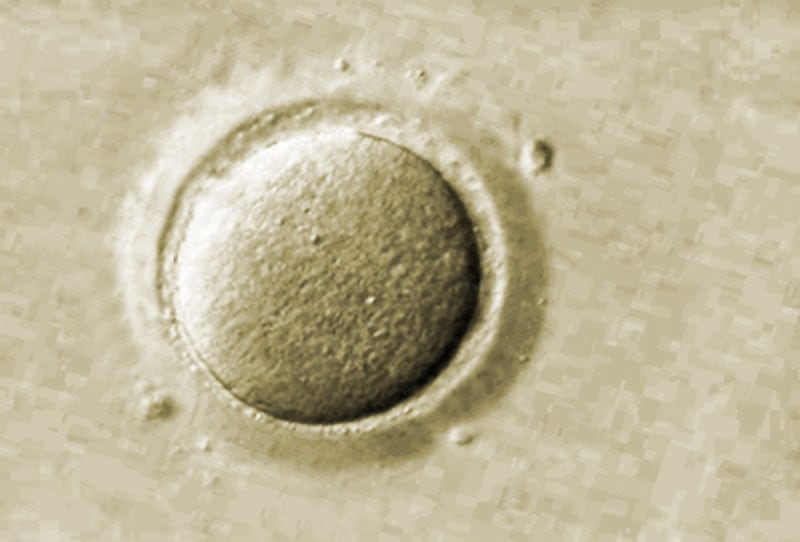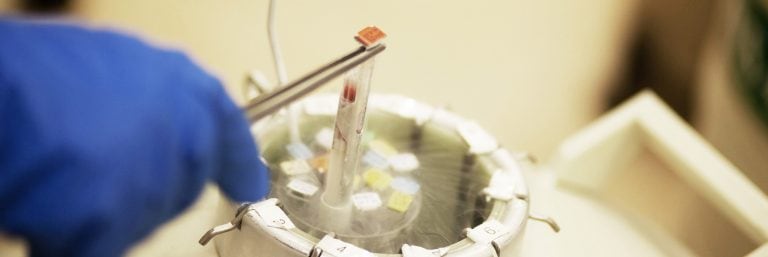Vitrifikation
Vitrifikation, sog. „Ultra schnelles Einfrieren“
Seit ca. zehn Jahren wird zunehmend auch im Humanmedizinischen Bereich die Vitrifikation angewendet. Es handelt sich hierbei um ein ultraschnelles Einfrierverfahren.
Bei der Vitrifikation handelt es sich um ein Verfahren, bei dem den Zellen durch Zugabe bestimmter Lösungen das intrazelluläre Wasser entzogen wird. Dadurch wird die Bildung von zellzerstörenden Eiskristallen verhindert. Mechanische Schädigungen der zellulären Bestandteile sind kaum zu erwarten.
Durch die relativ hohe Konzentration an Kryoprotektiva (Gefrierschutzmittel) ist jedoch prinzipiell ein zytotoxisches Risiko vorhanden.
Ein großer Vorteil der Methode ist die bis zu 98%-ige „Auftaurate“ und der Umstand, dass mit der Vitrifikation neben befruchteten Eizellen auch unbefruchtete Eizellen und Embryonen fast risikolos gefrierkonserviert werden können.
Der riesige Vorteil der Vitrifikation ist, dass z. B. unbefruchtete Eizellen von Frauen konserviert werden, die sich vor einer die Fruchtbarkeit gefährdenden Chemotherapie oder Strahlentherapie befinden (Fertilitätsreserve). Auch Eizellen von Frauen (zwischen 25 und 35 Jahren), welche sich zum Zwecke der verbesserten Schwangerschaftschance in einem späteren Lebensabschnitt (40-45(?)) eine Fertilitätsreserve anlegen möchten (sog. social freezing), können so behandelt werden.
Das Einfrieren von Embryonen kommt, insbesondere in den Ländern, in denen die Embryonenselektion erlaubt ist, zur Anwendung, wenn am 5. Kulturtag mehr Embryonen im Blastozystenstadium vorhanden sind, als übertragen werden sollen.
Der Nachteil der Methode für das durchführende Labor ist, dass immer nur einzelne Zellen (und nicht Gruppen von Eizellen) vitrifiziert werden können. Außerdem erfordert die Anwendung dieser Methode eine längere „Lernkurve“ und deutlich mehr Fingerspitzengefühl, als es beim slow freezing erforderlich ist.


